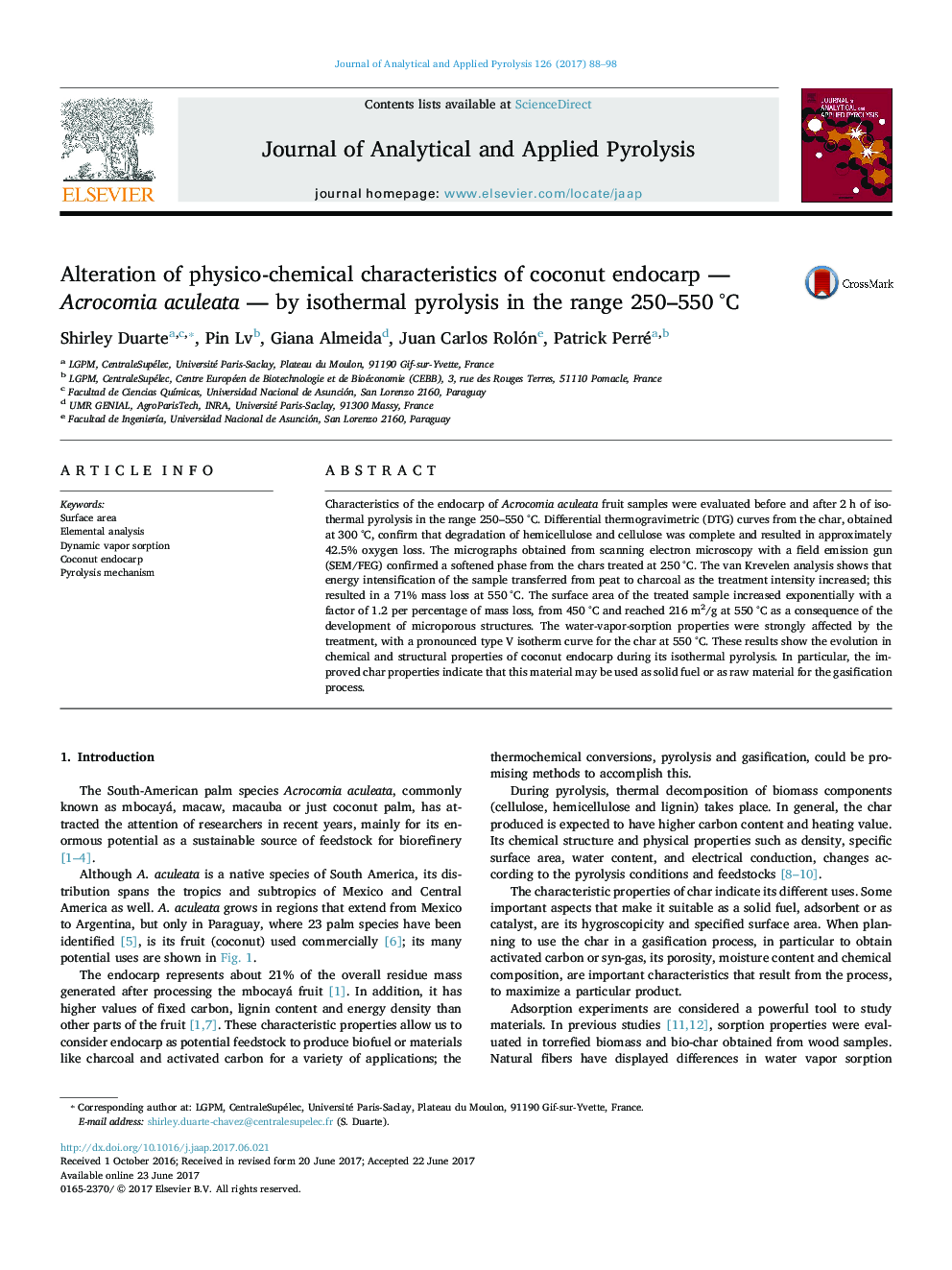| Article ID | Journal | Published Year | Pages | File Type |
|---|---|---|---|---|
| 5134661 | Journal of Analytical and Applied Pyrolysis | 2017 | 11 Pages |
â¢The evolution in chemical and structural properties of coconut endocarp during its isothermal pyrolysis was studied.â¢The results showed three decomposition stages during the pyrolysis of coconut endocarp.â¢The char obtained after 2 h of treatment at 250 °C presented mainly cellulose and lignin peaks, and the char obtained after 2 h of treatment at 300 °C exhibited lignin as its main component.â¢The sorption properties of coconut endocarp and its chars were investigated.â¢Char obtained at 550 °C demonstrated a high specific surface area value of 216 m2/g.
Characteristics of the endocarp of Acrocomia aculeata fruit samples were evaluated before and after 2 h of isothermal pyrolysis in the range 250-550 °C. Differential thermogravimetric (DTG) curves from the char, obtained at 300 °C, confirm that degradation of hemicellulose and cellulose was complete and resulted in approximately 42.5% oxygen loss. The micrographs obtained from scanning electron microscopy with a field emission gun (SEM/FEG) confirmed a softened phase from the chars treated at 250 °C. The van Krevelen analysis shows that energy intensification of the sample transferred from peat to charcoal as the treatment intensity increased; this resulted in a 71% mass loss at 550 °C. The surface area of the treated sample increased exponentially with a factor of 1.2 per percentage of mass loss, from 450 °C and reached 216 m2/g at 550 °C as a consequence of the development of microporous structures. The water-vapor-sorption properties were strongly affected by the treatment, with a pronounced type V isotherm curve for the char at 550 °C. These results show the evolution in chemical and structural properties of coconut endocarp during its isothermal pyrolysis. In particular, the improved char properties indicate that this material may be used as solid fuel or as raw material for the gasification process.
